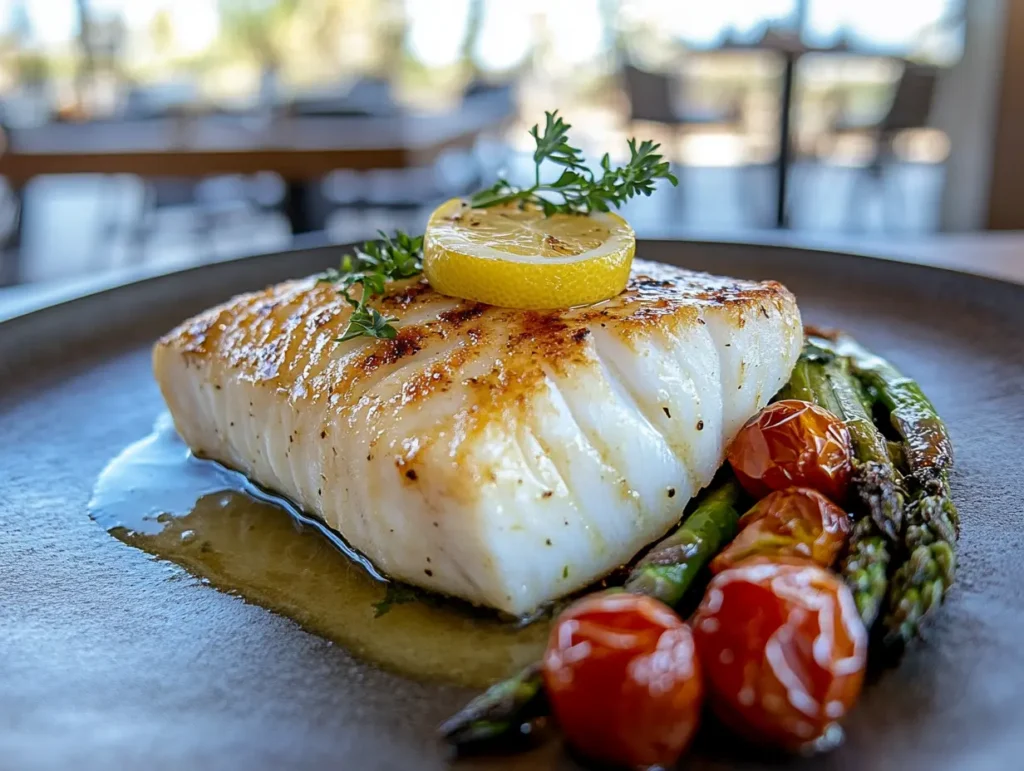Halibut is a mild, flaky white fish celebrated for its versatility in the kitchen. Whether you prefer baking, grilling, pan-searing, or poaching, choosing the best cooking methods for halibut ensures that its delicate flavor and texture are preserved. With the right technique, you can elevate this nutrient-rich fish to a restaurant-quality dish that impresses every time.
best cooking methods for halibut
Table of Contents

For ideas on seasoning halibut, check out flavors that pair well with halibut for complementary herbs, spices, and sauces.
Understanding Halibut
What is Halibut?
Halibut is a flatfish commonly found in the North Atlantic and North Pacific oceans. It has a mild, slightly sweet taste and a firm, flaky texture that holds up well in various cooking methods. Its versatility makes it a favorite among chefs and home cooks alike. Learn more about its species and characteristics on Wikipedia’s halibut page.
Why Cooking Method Matters
The right cooking method enhances halibut’s natural flavor and prevents it from becoming dry or overcooked. Halibut’s low-fat content makes it prone to drying out, so it’s essential to use techniques that retain moisture and add depth to its mild taste.
best cooking methods for halibut
Key Factors for Cooking Halibut
Cooking Temperature
To achieve the perfect texture, cook halibut to an internal temperature of 145°F (63°C). This ensures the fish is fully cooked while remaining tender and moist. Use a meat thermometer or the fork test to check doneness—the fish should flake easily without being dry.
Common Mistakes to Avoid
- Overcooking: Halibut becomes tough and dry when cooked for too long.
- Underseasoning: Its mild flavor benefits from bold seasonings and marinades.
- Using the Wrong Pan: A nonstick or well-oiled pan is essential to prevent sticking.
The Best Cooking Methods for Halibut
Baking
Baking halibut is one of the easiest and most reliable methods, ensuring even cooking and retaining moisture. It’s also ideal for incorporating herbs, vegetables, and marinades.
How to Bake Halibut
- Preheat your oven to 375°F–400°F.
- Place halibut fillets on a baking sheet lined with parchment paper or aluminum foil.
- Season with olive oil, lemon juice, garlic, and fresh herbs like dill or parsley.
- Bake for 10–15 minutes, depending on the thickness of the fillet. Use a thermometer to check for doneness.
Pros:
- Easy and hands-off.
- Perfect for one-pan meals with vegetables.
Cons:
- Overbaking can lead to dryness.
For more baking inspiration, check out this halibut marinara sauce recipe, which combines baked halibut with a tangy tomato sauce.
best cooking methods for halibut
Pan-Searing
Pan-searing creates a deliciously crispy crust while keeping the inside tender and juicy. This method is quick and perfect for weeknight dinners.
Step-by-Step Guide
- Prep the Fish: Pat the halibut fillets dry and season with salt, pepper, and optional spices like paprika or garlic powder.
- Heat the Skillet: Use medium-high heat with olive oil or butter.
- Sear the Fish: Cook each side for 3–4 minutes until golden brown.
Pros:
- Quick and flavorful.
- Adds a golden crust for texture.
Cons:
- Requires careful monitoring to avoid burning.
Enhance your pan-seared halibut with a marinade like the San Antonio grilled red pepper chicken marinade, which can be adapted for fish.
Grilling
Grilling halibut brings out smoky, charred flavors, making it a popular summer cooking method.
How to Grill Halibut
- Preheat the grill to medium-high heat.
- Brush both the grill grates and the fish with olive oil to prevent sticking.
- Grill for 4–5 minutes per side, depending on the thickness of the fillet.
Pros:
- Adds smoky flavor.
- Quick and easy.
Cons:
- Fish may stick to the grill if not properly prepared.
Poaching
Poaching is a gentle cooking method that ensures halibut remains moist and tender. It’s perfect for light, healthy meals.
How to Poach Halibut
- Heat a liquid base (water, broth, or wine) with aromatics like thyme, bay leaves, and lemon slices.
- Submerge the halibut fillets and simmer for 7–10 minutes.
Pros:
- Prevents overcooking.
- Infuses the fish with subtle flavors.
Cons:
- Does not produce a crispy texture.
Additional Tips for Cooking Halibut
Seasoning Suggestions
- Herbs: Dill, parsley, and cilantro add freshness.
- Spices: Paprika, garlic powder, and cumin enhance flavor.
- Marinades: Lemon, olive oil, and garlic-based marinades work well.
For pairing ideas, visit flavors that pair well with halibut.
Best Sides for Halibut
Halibut pairs beautifully with light and refreshing sides:
- Vegetables: Grilled asparagus, sautéed spinach, or roasted bell peppers.
- Grains: Quinoa, couscous, or wild rice.
best cooking methods for halibut
FAQs
What is the best cooking temperature for halibut?
The USDA recommends cooking halibut to an internal temperature of 145°F (63°C) to ensure it is safe to eat while remaining tender.
Can halibut be cooked without oil?
Yes, poaching or baking with parchment paper are excellent oil-free options.
How do you prevent halibut from sticking to the grill?
Use a fish basket or grease both the grill grates and the fillet thoroughly with oil to prevent sticking.
best cooking methods for halibut
Conclusion
Halibut’s mild flavor and versatility make it a favorite among seafood lovers. Whether baked, pan-seared, grilled, or poached, each method brings out unique qualities in the fish. By mastering these techniques and pairing them with complementary flavors, you can create restaurant-quality halibut dishes at home.
For more inspiration, explore Recipes Mint’s halibut marinara recipe or learn how to make marinara sauce taste better. Dive deeper into halibut’s characteristics on Wikipedia’s halibut page.
With these tips and ideas, you’ll master the art of cooking halibut and impress your family or guests with every bite!
